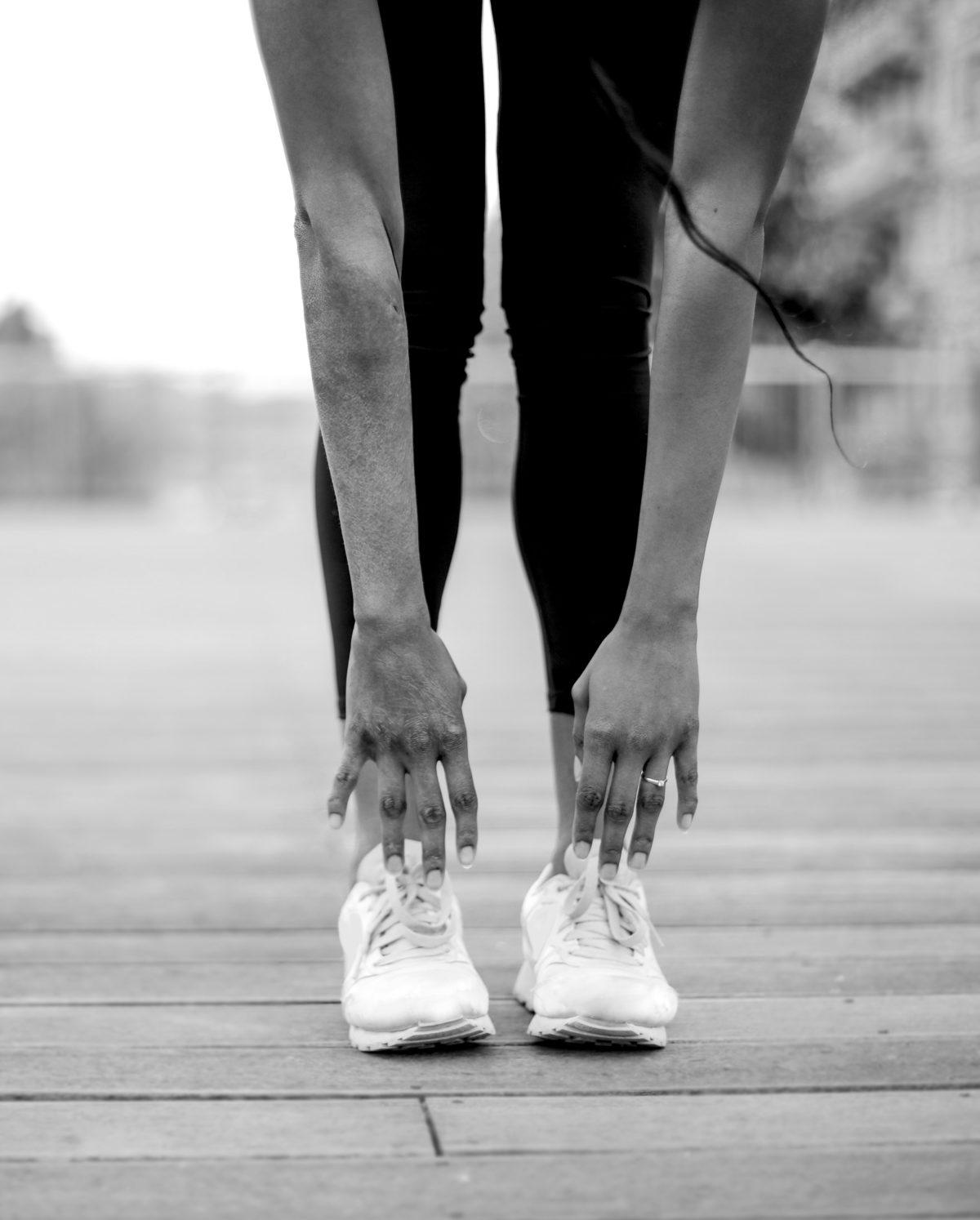The human foot is truly amazing, 26 bones, 30 joints, and over 100 muscles, tendons and ligaments. At one time in human history, the feet were used as a second set of hands. They helped us hold things, climb trees, carry heavy loads and pick up items off the ground. Nowadays most feet don’t have to work that hard, and it shows. This is another reason exercise is so important: it helps our feet be useful again. Keeping proper weight distribution in workouts is often an overlooked part of fitness, but it’s very important.
In modern times, the one thing our feet can still do extremely well is balance our bodies. Before you say, ‘but I don’t have balance’, I can assure you that is not true. If you have ever walked without falling, stood on the tips of your toes, jumped, or any other movements that almost everyone has done then you have balance.
Science time
Weight feels easiest to lift the closer it is to your natural center of gravity and the more inline it is with your base. This is usually directly over the center of our feet, between the balls of our feet and our heel.
To illustrate this, go grab a gallon of milk, water, or something that is roughly 10 is pounds. Hold it in front of you and keep it touching your chest. Hold it there for about 10-15 seconds. Pay attention to what your body is doing. Are you leaning? Are your toes grabbing the ground? Do you feel even weight distribution?
Now, extend that arm away from your chest and try to make your arm as straight as possible. Can you hold it in that position for 10-15 seconds? Did you notice what your body did as your arm extended? What changed the longer you held that position?
Most people will be able to stand with the weight touching their chest with relative ease. But as our arm extends in front of us, it changes our center of gravity in a much different way. You might have felt pressure in your toes as the weight moved forward. Then you may have felt your body adjust and the pressure went to your heels as you leaned back to compensate for the weight change.
So what does this have to do with CrossFit and lifting?
For safety and best performance, it’s important to do our lifts to a high quality. Some common lifts in most any gym, especially a CrossFit box, are squats, deadlifts, presses, and olympic lifts (snatch, clean & jerk). All of these require moving weight, usually a barbell along a vertical path. Anytime you add outside weight to your body, your body has to move and adjust to make up for the change.
Of course in functional and dynamic movements like the ones above there are many variables that can determine how well you complete the movement. A reason you might be having trouble lifting heavier weights, or you keep missing reps is due to how your feet are affecting weight distribution in workouts.
Take push press for example. A common error is the weight shifting into your toes when you bend the knees to start the movement. This is often referred to as the ‘dip’. So, if you dip and feel your toes grab the ground you will either not be able to complete the lift because the weight will drive out in front of you instead of overhead. Or, your body will get used to this happening and adjust/compensate so you can complete the lift.
Of course you might be strong enough to complete the lift even though you dipped into your toes. But think of it this way: if I were going to push someone would I use just my fingertips to apply pressure? Or would I put my whole palm flat against them and then push? I would definitely be able to deliver a much more forceful push with my whole palm compared to just my fingertips.
Applying proper weight distribution in workouts
Start paying attention to what your feet are doing in your lifting. You might need to slow lifts down, or break them into pieces, especially the more dynamic and aggressive ones.
When you deadlift do you feel pressure evenly through the whole foot or do your heels lift up and the weight presses into my toes? Has a coach ever told you to lift your toes off the ground during a squat in the hope you keep your heels down? Side note, this is a terrible cue, don’t use it. What about when you catch a clean or a snatch – what are your feet feeling? Do they feel stable and secure or do you stand up quickly because you are losing your balance?
Remember there is a reason your foot is the way it is. Parts of it provide balance and stability while others provide a solid platform so we can apply power and drive to move, carry and live healthy. Listen to your feet, often they are telling us minor fixes for weight distribution in workouts that can help in major ways.

